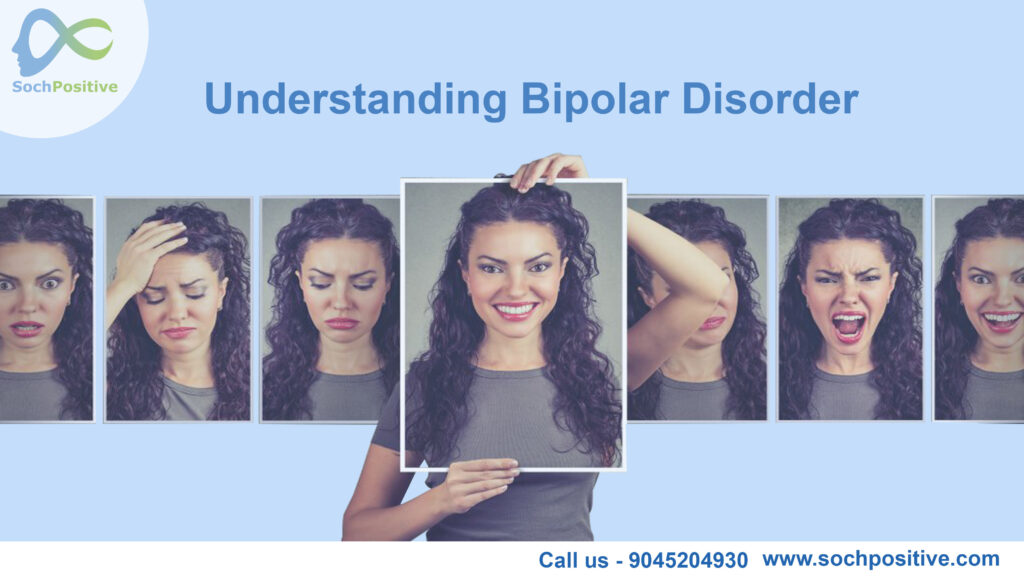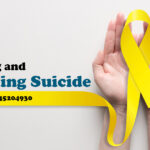
By Sushmita
Which Of My Feelings Are Real?
The Wild, Impulsive, Chaotic, Energetic And Crazy One?
Or
The Shy, Withdrawn, Desperate, Tired, Doomed And Suicidal One?
Probably A Bit Of Both, Hopefully Much
That Is Neither
If you are facing the same problem then, lets understand the clinical area of these symptoms
This is Bipolar disorder which formerly known as manic depression, is a mental health illness that involves emotional highs such as hypomania or mania and lows such as depression. Person having this problem may feel gloomy or hopeless when they are depressed, and they may lose motivation or pleasure in activities and on the other hand they may feel ecstatic, full of energy, or abnormally irritable when their mood switches to hypomania or mania (a milder form of mania). Their sleep, energy, activity, judgement, conduct, and the ability to think can all be affected by mood fluctuations. Mood swings might happen once a year or several times a year. While the majority of people will have some emotional symptoms in between bouts, some will not.
Even though bipolar disorder is a lifetime disorder, following a treatment plan might help a person control their mood swings as well as other symptoms. Medications and psychological counselling are used to treat bipolar illness in the majority of instances (psychotherapy).
TYPES AND SYMPTOMS
Bipolar and associated disorders come in a variety of forms. Mania, hypomania, and depression are examples. Symptoms might include erratic mood and behavior, causing severe anguish and problems in daily life.
Bipolar I is a kind of bipolar disorder. At least single manic episode has occurred, maybe followed or preceded by hypomanic or significant depressive episodes. Mania can sometimes lead to a disconnection from reality (psychosis).
Bipolar II is a kind of bipolar disorder. You’ve experienced at least one severe depressive episode as well as at least 1 hypomanic episode, but no manic episode.
Cyclothymic disorder is a type of cyclothymia. Person has had frequent times of hypomania signs and periods of depressive symptoms for at least two years — or one year in teenagers and children (though less severe than major depressive disorder).
Other kinds- Bipolar and associated illnesses, for example, might be caused by particular drugs or alcohol, or by a medical condition such as Cushing’s syndrome, multiple sclerosis, or stroke.
Bipolar II disorder is a distinct diagnosis, not a milder version of bipolar I disease. People having bipolar II disorder could also be depressed for longer durations, which can cause major impairment. Manic episodes in bipolar I disorder may become chronic and dangerous.
Even though bipolar disorder may strike at any age, it is most commonly diagnosed in adolescence or the early twenties. Symptoms differ from individual to individual, and symptoms can change over time.
Mania and hypomania
Mania and hypomania are two separate forms of abnormally passionate, jumpy, or wired people. Mania is divided into two types: mania and hypomania.
Mania and hypomania are two distinct kinds of mania that have many of the same symptoms. Mania is a more severe form of hypomania, with more visible issues at work, schools, and social events, as well as interpersonal issues. Mania might also lead to a loss of touch with reality (psychosis), requiring hospitalization.
In both a manic and hypomanic episode, three or more of these indicators are present:
- Someone who is extremely ecstatic, jittery, or wired.
- Signs of higher activity, energy, or restlessness include increased activity, energy, and agitation.
- Feelings of cheerfulness and self-assurance that are exaggerated (euphoria).
- Sleep requirements are reduced.
- Talkativeness that is out of the ordinary
- Thoughts that race
- Distractibility
- Poor decision-making, such as shopping binges, taking sexual risks, or making risky investments.
A major depressive episode
A major depressive episode is defined as a set of symptoms that are strong enough to impair daily activities such as job, school, social activities, or relationships. Five or more of the following symptoms are present during an episode:
- Sad, empty, hopeless, or crying moods are all signs of depression (in teens and children depressed mood may appear as irritability)
- Almost all activities have a noticeable lack of interest or pleasure.
- Significant weight loss, weight gain, or a decrease or increase in appetite when not dieting (in children, failure to gain weight as expected can be a sign of depression).
- Insomnia or an excessive amount of sleep.
- Either agitation or a sluggish pace.
- Fatigue or a lack of energy is a common occurrence.
- Feelings of unworthiness or inappropriate or excessive guilt
- Indecisiveness or a decreased ability to ponder or concentrate
- Suicide is something that many people consider, plan, or try.
Other signs and symptoms
Other signs of bipolar I and bipolar II illnesses, including such anxious distress, melancholy, psychosis, and others, may be present. Diagnostic tags like mixed or rapid biking may be applied to the timing of symptoms. Bipolar symptoms might also appear during pregnancy or shift with the seasons.
Children and adolescent symptoms
Bipolar illness symptoms in children and teenagers can be hard to spot. It might be difficult to identify whether these are typical mood swings, the effect of stress or trauma, or symptoms of a mental health disease apart from bipolar disorder.
Children and teenagers may experience different significant depressive, manic, or hypomanic episodes, although their patterns may differ from those experienced by adult with bipolar disorder. Moods might also fluctuate quickly during episodes. Between bouts, some children may experience periods with no mood problems. Extreme mood swings that are distinct from their regular mood swings are one of the most noticeable indications of bipolar illness in children and teenagers.
CAUSES
Although the specific origin of bipolar disorder is unclear, various variables could be at play, including:
- Differences in biology- Bipolar disorder patients’ brains appear to be changing physically. The importance of these alterations is still unknown, although they may eventually aid in the identification of causes.
- Genetics- People with bipolar disorder are more likely to have a first-degree family with the illness, such as a siblings or parent. Researchers are looking for genes that may play a role in the development of bipolar disorder.
RISK FACTORS
The following factors may raise your chance of developing bipolar illness or act as a trigger as your first episode:
- Having a first-degree relation with bipolar disorder, including a parent or sibling
- High-stress events, such as a loved one’s death or another terrible event
- Abuse of drugs or alcohol.
COMPLICATIONS
Bipolar disorder, if left untreated, can lead to major problems that influence every aspect of your life, including:
- Addiction to drugs and alcohol causes a slew of issues.
- Suicide or attempted suicide
- Financial or legal issues
- Relationships that have been damaged
- Performing poorly at job or in school.
CO-OCCURING CONDITIONS
If you have bipolar illness, you may also have another health problem that requires treatment in addition to bipolar disorder. Some disorders can exacerbate the symptoms of bipolar disorder or make treatment less effective. Here are several examples:
- Anxiety disorders
- Anorexia nervosa (Eating disorder).
- Attention deficit hyperactivity disorder (ADHD)
- Substance abuse
- Heart disease, thyroid problems, headaches, and obesity are examples of physical health issues.
“BIPOLAR DISORDER IS A CHALLENGE, BUT IT CAN SET YOU UP TO BE ABLE TO DO ALMOST ANYTHING IN THIS WORLD”





